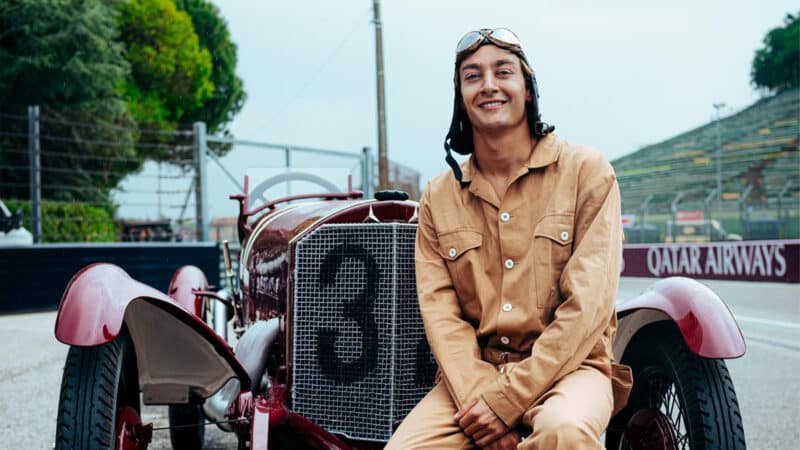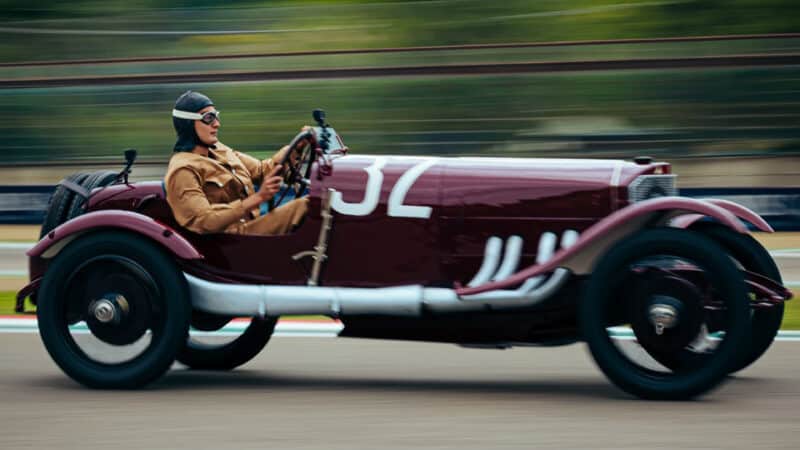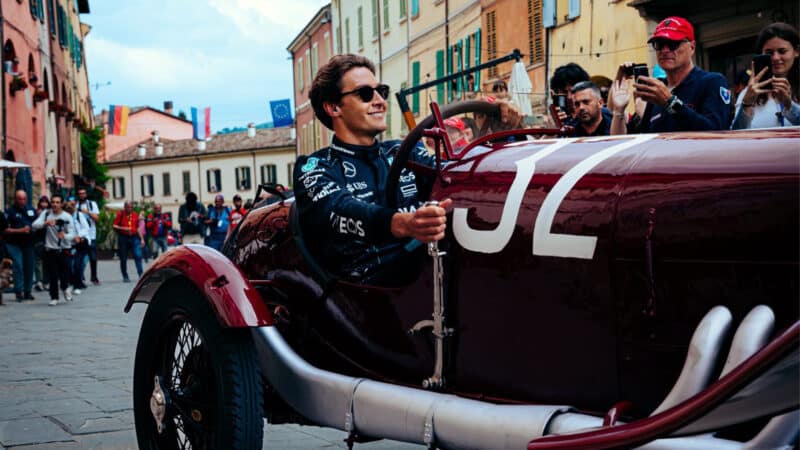It worked brilliantly well. Not as extreme in concept as the pure grand prix racer which would appear a few months later at Monza, but a more flexible, usable and adaptable road racer. Long term Mercedes employee Christian Werner – he’d joined the company as a mechanic and was by now an engineer – won the race after a tight battle with the sports racer Alfa Romeos of Count Giulio Masetti and Antonio Ascari. As a precaution against the locals impeding any non-Italian car, Werner’s car had been painted red rather than in the traditional German racing white.
This is the car, the M7294, which Mercedes has just rebuilt (in many aspects from scratch) and in which Russell made his ceremonial eight-mile drive. “It drove so nicely,” he enthused. “Considering it’s 100 years old. It was a bit difficult to reach the brake pedal because of how tall I am so I was having to use the handbrake as well. When I took some speed around one of the left-handers it was actually handling really nicely.
“I’m super impressed… I just couldn’t imagine racing this car on public roads like these, though. It took a bit of time to get used to the pedals, because the throttle is in the middle, the clutch on the left and the brake on the right.
“The car hasn’t been driven for over 80 years and it’s a car that you expect just to see in a museum and never be touched. To see how well it was driving – and it was so loud – sort of made the hair stand up on my skin. A real privilege and seeing the Mercedes star on the front as well, and knowing the history of that, it was pretty special.”

George played the part perfectly
George Russell
That Targa victory would be the highlight of Merc’s season, for the later Ferdinand Porsche-designed grand prix racer – the M218 – was not a success despite being the most powerful in the field, with 170bhp. Known as ‘the widow maker’ because of its difficult handling, it had a fairly modest career as Alfa Romeo took the baton from Fiat as the dominant grand prix force. Mercedes though would in time find its way back to dominance – in the 1930s, briefly again in the ‘50s and of course most recently in the hybrid era of F1.
It’s struggling at the moment, but at this level and the weight of expectation which comes with the name, it’s the pain of the struggle which energises the forces and leads eventually to a competitive rebirth. That’s how it’s always been. It’s just a question of how long it will take.



